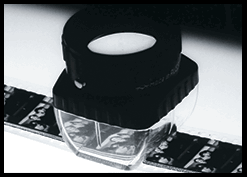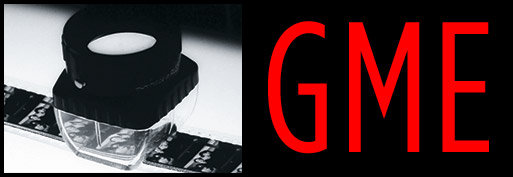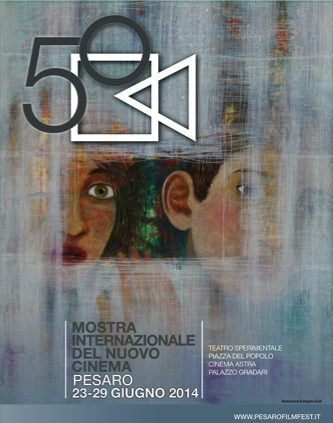GME News
Pesaro Film Festival - Program of American Experimental Narratives Curated by Jon Gartenberg
/Warren Sonbert Films Screening in Paris Tribute to the "New York Underground"
/
|
||||||||||||||||||
Warren Sonbert Retrospective at Tate Modern
/
|
||||||||||||||||||
Jon Gartenberg Appears in VITO - The New HBO Documentary on the Life of Vito Russo
/"Directed by award-winner Jeffrey Schwarz, VITO paints a touching portrait of this outspoken
activist in the LGBT community’s struggle for equal rights, using period footage and film
clips to capture a vibrant era of gay culture. “If you’re going to talk about the gay-rights
movement, you’re going to talk about Vito,” says journalist David Ehrenstein.
The documentary features rich archival interviews with Vito, as well as insights from gay
rights activists, including: Larry Kramer and Arthur Evans; film scholars, among them
former MoMA film curator Jon Gartenberg; and journalists/writers such as Michael
Schiavi and Gabriel Rotello. VITO also offers personal accounts from his many friends,
including Lily Tomlin and Bruce Vilanch, and his family members, including brother
Charles Russo and cousin Phyllis Antonellis.
Vito’s love of movies guided him to a job in the film department at the Museum of Modern
Art, where he began taking note of gay characters in early films. The result of his research
was “The Celluloid Closet,” an entertaining and informative lecture and clip show that
combined his love of show business and radical gay politics, which he took on the road to
gay film festivals and college campuses. His seminal 1981 book of the same name
explored the ways gays and lesbians were portrayed on film, what lessons those characters
taught gay and straight audiences, and how those negative images were at the root of
society’s homophobia. The book was later adapted into the 1995 HBO Peabody Award-
winning documentary “The Celluloid Closet,” directed by Rob Epstein and Jeffrey Friedman..."
Tribeca Film Festival Experimental Film Selections Receive Theatrical Distribution
/In his capacity as Experimental-Film Programmer for the Tribeca Film Festival,
Jon Gartenberg selected two films for TFF 2011 that, we are proud to announce,
have received U.S. distribution and are currently playing around the country -
Bill Morrison's THE MINERS' HYMN from Icarus Films &
Marie Losier's THE BALLAD OF GENESIS AND LADY JAYE from Adopt Films.
Bill Morrison's THE MINERS' HYMNS (2011)
The ill-fated coal mining communities in North East England are the subject of this inspired documentary by multi-media artist Bill Morrison. Their story is told entirely without words, yet the film is far from silent: it features a remarkable original score by the Icelandic composer Jóhann Jóhannsson.
Using rarely-seen footage from the British Film Institute, the BBC, and other archives, THE MINERS' HYMNS celebrates social, cultural, and political aspects of the extinct industry. Focusing on the Durham coalfield located in northeastern England, it depicts the hardship of pit work, the role of Trade Unions in organizing and fighting for workers' rights, the years of increased mechanization and the annual Miners' Gala in Durham.
• In U.S. Distribution through ICARUS FILMS.
• Theatrical Run begins on February 8th, 2012 at New York's FILM FORUM.
• US Release / DATE AND THEATRES.
Marie Losier's THE BALLAD OF GENESIS AND LADY JAYE (2011)
An intimate, affecting portrait of the life and work of ground-breaking performance artist and music pioneer Genesis Breyer P-Orridge (Throbbing Gristle, Psychic TV) and his other half and collaborator, Lady Jaye, centered around the daring sexual transformations the pair underwent for their “Pandrogyne” project.
• In U.S. Distribution through ADOPT FILMS.
• Theatrical Run begins on March 8th, 2012 in NYC at the CHELSEA CINEMAS.
• US Release / DATE AND THEATRES.
Warren Sonbert's AMPHETAMINE and Other Works Featured in Recent Exhibitions in NYC & London
/AMPHETAMINE, along with other films by Warren Sonbert, was recently featured in two presentations - one in New York and one in London - each focusing on the works of queer and underground filmmakers.
04/25/2012 •NEW YORK•DIRTY LOOKS
Dirty Looks is a Monthly Platform for
Queer Experimental Film and Video
Bradford Nordeen's April program featured works by
"two key figures in queer and underground film"
Warren Sonbert and Tom Chomont.
The program included Warren Sonbert's
AMPHETAMINE (1966, with Wendy Appel),
DIVIDED LOYALTIES (1975-78) and
HONOR AND OBEY (1987).
04/14/2012 •LONDON• THE LITTLE JOE CLUBHOUSE
The Little Joe Clubhouse is a unique
temporary film space from the creators of
AMPHETAMINE (1966), was presented by Stuart Comer,
Film Curator at London's Tate Modern.
IN THE STREET by James Agee, Helen Levitt and Janice Loeb Premieres on ARTE TV France
/IN THE STREET (1952)
Photographed by James Agee, Helen Levitt & Janice Loeb.
Edited by Helen Levitt.
ARTE Televison France broadcast a rare presentation of IN THE STREET on May 28, 2012 as part of a series entitled “Black & White”, illuminating the diversity and aesthetics of classic films photographed in black-and-white.
GME was pleased to successfully negotiate this deal with Arte on behalf of the estate of the photographer Helen Levitt. GME was credited at the end of the film’s broadcast as follows:
"Film provided courtesy of the Estate of Helen Levitt, Cecile Starr, and Gartenberg Media Enterprises."
Photo © The Estate of Helen Levitt. Used by permission. All rights reserved.
In 2006, IN THE STREET was selected by the Library of Congress as "culturally, historically, or aesthetically significant" and added to the United States National Film Registry preservation program:
"This lyrical, slice-of-life documentary (by Helen Levitt, James Agee and Janice Loeb) about East Harlem is one of several outstanding children’s documentaries (“The Quiet One” and “Louisiana Story,” among others) produced immediately after World War II. The filmmakers captured the energy-filled streets as part theater, part battleground and part playground. In their everyday lives and actions, people project an image of human existence against the turmoil of the street." - www.loc.gov
Jon Gartenberg and Tribeca Film Festival profiled in Millennium Film Journal Issue No. 54 - Fall 2011
/MFJ No. 54 Fall 2011
TRIBECA FILM FESTIVAL 2011
Jon Gartenberg has been the programmer for experimental works at the Tribeca Film Festival since 2003 and has maintained an unwavering commitment to the presentation of non-narrative, artist-driven films. Jon, a dedicated film specialist and professional archivist and distributor, exudes a breadth of knowledge and love of the medium, and his enthusiasm is infectious. In a recent conversation, Jon and I discussed his tenure with Tribeca and the philosophy behind his selections.
In the past few years, experimental work seemed to be getting scarcer at the festival, and I wondered if there was a decline in support. On the contrary, he said. The interest is still there, but the overall number of programs in the festival was cut in half, and this affected the experimental film programs proportionately. In fact, the key people at Tribeca give him tremendous latitude and freedom. His only disagreement with them came with his wanting to program films that are under the conventional feature length minimum of 85 minutes in their own individual time-slots. "The filmmaker makes what the filmmaker makes," emphasized Jon, "without trying to force fit into a conventional time slot," and in his view such films should be treated with the same care and attention as the longer features. Obviously persuasive, he has been programming films like Bill Morrison's 52-minute The Miners' Hymns (2011), screened at this year's festival, on their own, rather than including them in a group program.
This year Gartenberg presented four programs: in addition to The Miners' Hymns, he included Marie Losier's 75-minute The Ballad of Genesis and Lady Jaye (2011); a program of recent experiment shorts under the title Impressions of Memory; and a selection of women's films preserved by the New York Women's Preservation Fund over the past 15 years.
The two longer films fall on opposite ends of the experimental spectrum, and both involved a significant amount of creative time and research, an earmark of many of the films selected this year. Before starting production on The Miners' Hymns, Morrison spent a year researching rhe history of the coal mining region and collier communities of County Durham in North England, visiting regional film archives and interviewing union organizers. The film opens with a 4.5-minute sequence of aerial shots, in gorgeous HD color, of innocuously suburban and rustic England: sports arenas, empty fields, and shopping centers, all identified in onscreen text as the location of former coalmine sites. This section is the only part of the film for which Morrison actually produced the images: the remainder is all archival footage. Following this sequence, we are confronted with a beautifully crisp, black and white ode to the British Miners' Union, the workers and their families and their close-knit communities. We see a celebration of coalminers' lives and culture, and the yearly Durham Miners' Gala, an event that often included thousands of Unionists and their families and took place from the early 19th century until the mid-1980s. Slow motion footage of past galas with smiling and cheering people carrying banners, brass bands playing (each colliery had its own banner and brass band), and political rallies, intercut with the daily activities of the coal miners as they descend into the mines. Morrison manipulates the footage, slowing down each movement to match the tempo of the plaintive music. This technique allows us to examine each face in detail and reinforces our awareness of the repetitive labors of the men who work in the mines. The scenes inside the mine are striking - pristine and sharp - as men lift their lanterns and gradually move downwards, from bright light into darkness. Coal pours from one large container into another. Little seems to change as the decades pass by on the screen. We also see footage of the mining strikes, which tore the area apart as scabs were brought in past the angry picket lines.
While the archival footage is drawn from a broad range of sources, much of it comes from the BBC, the British National Archives and the National Coal Board film unit material. These government-sponsored organizations naturally celebrated the mining industry and its workers, since from the beginning of the industrial revolution, the economic might of England depended on products of their labor. Though, while, mining may appear to be fulfilling work, the film does not allow us to forget its difficulties and the tremendous cost to the miners' bodies. Adding further gravitas to the film is the somber score by Morrison's collaborator Icelandic composer Johann Johansson, which makes use of brass instruments (a tradition with colliers) pipe organ, and electronic sounds. The soundtrack, commissioned before the film and produced prior to the creation of the archival collage, reinforces the combined themes of joyful celebration and acute loss.
This interesting combination of themes is also present in Jon Gartenberg's second feature-length selection: Marie Losier's The Ballad of Genesis and Lady Jaye. Best known for her series of films starring avantgarde filmmakers, including George and Mike Kuchar; Guy Maddin; Richard Foreman and Tony Conrad, this is the latest and longest of her insightful portraits of creative personalities. Losier documents the romance between Genesis P-orridge, underground performance artist and frontman for the groups Throbbing Gristle and Psychic TV, and his female companion Lady Jaye Breyer, conceptual artist and dominatrix. Very much in love, they lived and worked together, and eventually undertook a series of reconstructive surgeries to transform themselves physically to resemble each other as much as possible. This was one aspect of what they called their 'Pandrogyne Project', the goal being to become two parts of a single person.
Losier documented this transition over a sevenyear period. Shooting with a 16mm spring-wound Bolex in 28 second takes and three-minute (100 foot) segments, mixed in with some HD video and super 8 film, she generated about 150 hours of material. She put the pieces together in a style akin to a William Burroughs' cut-up and added a collage of fifteen layers of sound. The style is as unconventional as the characters - extreme, kinetic, shocking, wildly colorful, yet personal, giving the viewer a visceral experience of the couple and, as Losier calls it, "the energy of love" that surrounded them. Their magnificent affection for each other manifests in their decision to become one person. "Instead of having children, which is, in a way, two people combined to become a new person: what if we made of ourselves a new person instead?" says Genesis in the film. And they proceed to do this. Although we can almost accept Genesis' justification for breast implants and lip augmentation, the film is often hard to watch, particularly as a surgeon prepares Lady Jaye s beautiful smooth-skinned face for cosmetic surgery, drawing bold black lines to indicate incisions. Towards the end of the film, Lady Jaye's premature death comes as a heartbreaking surprise to us, as well as to her lover. Like The Miners' Hymns, the dramatic contrast between the celebration of life and the profundity of loss defines the poignancy of the film.
Each year Jon casts a wide net in order to find a mixture of artists and styles for his program of experimental shorts, wanting to offer the richest experience to the Tribeca audience. He sees thousands of films: experimental work is funneled to him when submitted to the festival, and some films get sent to him direcdy. He goes to the Rotterdam Film Festival to bring a wider variety of works that may not get submitted, like Cyrus Frisch's Dazzle (described in my review of the TFF in MFJ 52), and are rarely released in the United States.
Though, if diversity is his goal, why does he repeatedly program particular filmmakers like Ken Jacobs and Jay Rosenblatt (both in the shorts program this year), or Bill Morrison and Mark Street? Although he always discovers new filmmakers (e.g. this year Brendon Kingsbury, with his gentle, mysterious One Over Wonderlust [2010], a grainy work about nostalgia, merging the present and the past, in addition to several other films), Jon emphasizes that "watching an artist's development (over time) is an important part of appreciating the work." Evolution is critical to understanding an artist's creative process.
This year's shorts theme was Impressions of Memory, and the selections reflected on the distinct ways in which images evoke memory. The 12 films screened were all either world, U.S. or New York premieres. Some films seemed reminiscent of established filmmakers: the quick-cutting, subtly erotic Strips (2010) by Félix Dufour-Laperrière, for example, brought to mind Bruce Conner's 1966 short Breakaway, while Filmpiece for Bartlett (2010) by Scott Nyerges deliberately quoted the style of the less-remembered Scott Bardett as a tribute to the late San Francisco filmmaker. In the words of Bartlett: "There is a pattern in MY film work that could be the pattern of a hundred-thousand movies. It simply is: Repeat and purify; repeat and synthesize; abstract, abstract, abstract." And Nyerges did just that with live footage, hand-painted filmstrips and paper. A fitting ending for the program was Johan Kramer's Bye Bye Super 8 (2010), a personal send-off and homage to Kodachrome, the recently extinct film stock celebrated for its colors. Ironically, the colors of the work screened looked splendid in the HD presentation format. The program selections resonated with each other, and the idea of memory gave the viewer an entry into works that may not have been otherwise accessible. As usual, Jon led the Q & A with insightful questions and statements about the artists' works, both drawing out the filmmakers and encouraging the audience members to speak up as well.
In addition to the Impressions of Memory program, Jon collaborated with New York Women in Film & Television (NYWIFT) to present 11 rarely seen and under-appreciated short experimental films by women, all preserved by the Women's Film Preservation Fund (WFPF) between 1950-1984. He introduced the evening along with New York Women in Film and Television's Executive Director, Terry Lawler. WFPF is the only program in the world that works to preserve the cultural legacy of women in the industry. Avant-garde women filmmakers have too often been overlooked in favor of the 'old boys club', and seeing works by Mary Ellen Bute, Storm de Hirsch, Faidi Hubley, and Marie Menken, as well as Liane Brandon, Lisa Crafts, Barbara Hammer, Jane Aaron, Bette Gordon, Anita Thacher and Caroline Ahlfors Mouris in a cohesive, varied, sexy and abstract program was a rare pleasure.
As the co-chair of WFPF, I had a vested interest, but seeing these films on a large screen was a great treat for everyone. The audience was captivated in spite of projection problems that caused some delays. A discussion followed the screening with panelists including directors Liane Brandon, Lisa Crafts, Barbara Hammer, Jane Aaron, Bette Gordon, as well as animator Emily Hubley, and Bute's films curator/ collector, grand dame of avant-garde cinema, Cecile Starr. It was moderated by the knowledgeable and charming Drake Stutesman, chair of The Women's Film Preservation Fund and editor of Framework: The Journal of Cinema and Media.
Jon Gartenberg is committed to the idea that it is "important to keep the experimental ethos within the larger context of the festival." In keeping with this, he takes on the daunting task of introducing to a wider movie-going audience works produced by creative artists for a variety of reasons - but rarely for fame and never for fortune. The experimental films are shown in the same venues, in adjacent theatres, and treated with the same respect as the larger more commercial feature films. They are screened several times during the festival, with press screenings in the weeks before and announced with the same public relations barrage, even including red carpet introductions. And the films are listed with their descriptions in alphabetical order in the Tribeca catalog, along with all of the other programmed works, for a general audience to select from. This contrasts with other major festivals, such as the London and the New York Film Festivals, which run a ghettoizing "avant-garde weekend" during which each film is shown only once. As such, the exposure is amazing - articles and reviews in the New York Times, Time Out and the Wall Street Journal pique curiosity and engage viewers who might never have seen a non-narrative film before. This kind of recognition is probably the most unusual aspect of the Tribeca Film Festival, and the most rewarding for the filmmakers. Perhaps Jon is creating another "standard" in the industry. I certainly hope so.
ROBERTA FRIEDMAN











